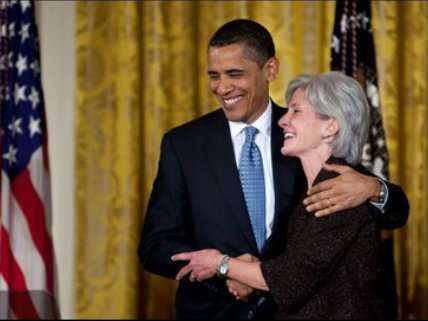Insurers Say 20 Percent of Obamacare Sign Ups Haven't Paid Yet

There's an awful lot we still don't know about Obamacare.
For example, the federal government can't yet say what percentage of the 3.3 million people who have signed up for coverage through Obamacare have paid their first month's premium. Eventually, the government may be able to track that information directly, but it can't right now because payment processing is among the back-end computer systems that have not been built yet.
What that means is that we don't know how many of those 3.3 million sign-ups are actually enrolled in insurance—and how many remain uninsured. But the total is almost certainly quite a bit smaller than the administration's sign-up figure.
The New York Times reports that roughly 20 percent of sign-ups haven't paid:
Lindy Wagner, a spokeswoman for Blue Shield of California, said that 80 percent of those who signed up for its plans had paid by the due date, Jan. 15. Blue Shield has about 30 percent of the exchange market in the state.
Matthew N. Wiggin, a spokesman for Aetna, said that about 70 percent of people who signed up for its health plans paid their premiums. For Aetna policies taking effect on Jan. 1, the deadline for payment was Jan. 14, and for products sold by Coventry Health Care, which is now part of Aetna, the deadline was Jan. 17.
Mark T. Bertolini, the chief executive of Aetna, said last week that the company had 135,000 "paid members," out of 200,000 who began to enroll through the exchanges. "I think people are enrolling in multiple places," he said in a conference call. "They are shopping. And what happens is that they never really get back on HealthCare.gov to disenroll from plans they prior enrolled in."
Kristin E. Binns, a vice president of WellPoint, said that 76 percent of people selecting its health plans on an exchange had paid their share of the first month's premium by the due date of Jan. 31.
Obviously this isn't a complete picture. But it's worth noting that this isn't the only report to suggest a non-payment rate of about 20 percent. At the end of January, CNN Money also reported a likely attrition rate of 20 percent. And insurance industry consultant Robert Laszewski has also estimated that non-payment will likely end up in that range.
If that's the case, then the true number of enrollments is closer to 2.64 million—well below the administration's target for this point in the open enrollment period. Based on early state data, it's even possible that the final rate of non-payment will be higher: As Jed Graham of Investor's Business Daily recently noted, Washington state's payment rate is only about 50 percent, and Nevada's is just 66 percent. I'd bet that these percentages rise. But even still, it's clear that follow-through on sign-ups has not been particularly robust.
We also don't know how many of the people who have enrolled were previously uninsured, and how many were already covered but are switching to exchange-based coverage. But there are some signs that the percentage of people now getting coverage who did not have it below could be quite low.
Laszewski, a well-connected health insurance consultant, told CBS News that the percentage of sign-ups who are newly insured could be in the range of 10 percent:
[Laszewski] says that to calculate a more accurate number, one must subtract about 20 percent of the enrollees because they haven't paid (and so aren't technically insured); as well as about two-thirds of the enrollees because they were already insured prior to signing up for Obamacare.
"Looking at the total of 3.3 million, netting out the non-pays, and listening to the anecdotal carrier reports, it doesn't look like we have more than a fraction--certainly something less than 10%-- of the previously uninsured," said Laszewski.
Again, we can't be certain here. But Laszewski's estimate tracks with other reports and information we've seen. A survey by the McKinsey Center for U.S. Health reform found that only 11 percent of those buying insurance on the exchanges were uninsured. Aetna CEO Mark Bertolini told CNBC that his company's plans had failed to attract the previously uninsured.
It may be a while before a more accurate picture of how the law affected enrollment emerges. But for now, one thing we can be fairly sure of is that the headline sign-up numbers don't tell the whole story.


Show Comments (61)